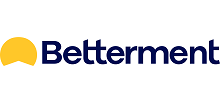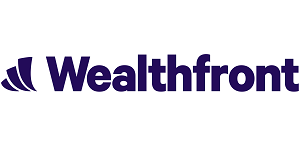Betterment offers robo-advisor services that can provide automated investment management, from portfolio creation to periodic rebalancing and reinvesting. There’s helpful features, like tax-loss harvesting, and access to human advisors with Betterment Premium.
How do we evaluate robo-advisors, like Betterment? We look what level of investor would benefit, what tools are available, account minimums, and whether applicable fees are fair. We put that in the context of other top options to give you a clear view of which automated investing account you should go with. See how Betterment compares against our list of the Best Robo-Advisors.
What is Betterment?

Founded in 2008, Betterment is the largest independent online financial advisor, now commonly referred to as a “robo-advisor.”
Dozens of robo-advisors have come about since, with nearly every major brokerage in America creating at least one of its own. But Betterment remains the largest independent robo-advisor with over $40+ billion in assets under management as of 2023.
Betterment provides automated investment management comparable to traditional human investment advisors but at a fraction of the cost.
Using the service, investors can have diversified ETF portfolios including stocks and bonds in thousands of companies, with virtually any amount of money they have to invest (you just need a deposit of $10 to get started). Betterment offers both taxable accounts and tax-sheltered retirement accounts.
Betterment pros & cons
Pros
- Low minimum initial investment — Open an account with as little as $10.
- Low annual fee — The annual advisor fee is on the fair end of the robo-advisor range at $4/month or 0.25%-0.40% annually.
- Complete investment management — Automated portfolio management manages your account for you.
- Tax-loss harvesting offered on taxable accounts — This strategy is built to help minimize the tax liability generated by your investments.
Cons
- High minimum for Betterment Premium service — $100,000 minimum balance required in cash, stocks, bonds, or crypto holdings for Betterment Premium.
- Higher annual fee on larger portfolios — Betterment is $4 month with an automatic switch to 0.25% if certain factors are hit. The fee for Betterment Premium is high from a robo-advisor at 0.40%, but it includes on-demand support from Certified Financial Planner™ professionals.
How does Betterment work?
Betterment uses Modern Portfolio Theory
As is typical of robo-advisors, Betterment uses Modern Portfolio Theory (MPT) to create and manage your investment portfolio. It’s an investment strategy that emphasizes asset allocation based on targeted risk levels.
You begin by completing a questionnaire that asks about your investment goals, time horizon, and other details. The answers you give are used to create a personalized portfolio recommendation.
There are multiple portfolio strategies to choose from and all but two include a mix of stocks and bonds. The default strategy, Core Portfolio, is widely diversified and designed for long-term investing goals.
Betterment then suggests investments to you depending on your risk tolerance with options ranging from conservative (more bonds, fewer stocks) to aggressive (more stocks, fewer bonds). If you’re a little more experienced, you can choose a Flexible portfolio and adjust your asset weightings yourself.
Betterment invests in different asset classes
As a Betterment investor, your portfolio is made up of investments in a variety of ETFs depending on strategy. There are different categories of stocks and various categories of bonds you might invest in across multiple asset classes. (There are also portfolios for crypto investing.)
With the use of index funds, investment expenses are minimal, which means fewer fees for you.
Betterment manages your account
Once your portfolio has been created, Betterment manages it for you until you close your account. Betterment will provide periodic rebalancing, to help keep each asset class consistent with the target investment percentage. They’ll also reinvest dividends to help you reach your targets.
Betterment provides tax-loss harvesting
On taxable accounts, Betterment offers tax-loss harvesting. This is a strategy in which losing asset positions are sold off near year-end to offset gains in other asset classes. The losing asset classes are later replaced with comparable ETFs to maintain your portfolio’s target asset allocation.
Betterment features
Low minimum initial deposit
Betterment doesn’t require clients to maintain a minimum investment account balance, but there is a deposit minimum of as little as $10.
Available account types
Available accounts include:
- Taxable individual and joint brokerage accounts.
- Traditional, Roth, SEP, and Roth conversion IRAs.
- Trusts and non-profit accounts.
- 401(k) plans.
Betterment Cash Reserve
Betterment Cash Reserve is a high-yield cash account that can grow your savings by offering a notable APY. There’s no minimum balance required (after a min. deposit of $10) and no monthly or maintenance costs to worry about
Another great feature that many similar accounts don’t offer is unlimited withdrawals from your account. Typically, you only get six withdrawals per month.
Betterment Checking
Betterment also offers a checking account with no fees and no minimum balance. Plus, your ATM fees are reimbursed worldwide.
Best of all, your Betterment checking account also comes with a Betterment Visa® Debit Card that earns cash back on purchases from participating brands. Rewards are available at thousands of merchants worldwide, both online and in-person (for online shopping, you’ll need to shop through Betterment’s “Earn Rewards” section on the site or app).
Cash back is automatically deposited into your account within 90 days. To make earning rewards easier, Betterment remembers where you shop most to show you relevant offers. You can also use the app’s locator to find offers in your area.
If you’re getting started with investing, the extra money in your account each month could give you the funds you need to boost your portfolio.
Mobile check deposits
Betterment customers who have been active for at least 30 days and received direct deposits into Betterment Checking totaling $500 or more are eligible for mobile check deposits through Betterment’s app. This feature is convenient and straightforward to use.
Advice packages
Robo-advisors give investors a hands-off way to grow their wealth, but sometimes you need direct financial advice too. Betterment offers six different packages to help you plan for the future with a hand from dedicated CFP® professionals.
This is a premium service that costs extra. The prices are:
- Getting started – $299.
- Financial check-up – $399.
- College planning – $399.
- Marriage planning – $399.
- Retirement planning – $399.
- Crypto planning – $399.
The retirement planning package, for instance, provides you with a 60-minute call with a CFP® professional to get a review of your situation with the aim to help you get on track for your future retirement. These may not be for everyone, especially considering the high price.
If you aren’t happy with the service you receive, Betterment may provide a full refund within 30 days of your call if it falls under their policy.
External account synching
Similar to financial account aggregators like Empower, known as Personal Capital prior, Betterment lets you add external accounts to your Betterment account. The platform doesn’t actually manage them, but adding them to your account can give you a better overview of your finances. Betterment will also provide advice about your outside investments (if you have the extra Premium plan).
For example, you can sync an employer-sponsored retirement plan such as a 401(k). Betterment can then make recommendations on how to better manage this account and others. Empower is a better overall financial product for this (and 100% free), but you may still prefer to go with Betterment if you’re a user of their robo-advisor.
Mobile app
Betterment offers its mobile app with all the functions and capabilities of the web version. It’s available in the App Store for iOS devices and also available on Google Play for Android devices.
Deposits and withdrawals
The most convenient way to make a deposit into your account is through electronic transfers from your checking account via the ACH network.
You can also transfer assets from outside brokerage accounts using the Automated Customer Account Transfer Service (ACATS). Transfers from retirement accounts can be completed through IRA rollovers.
Transferred funds are automatically invested within one or two business days. Betterment does not accept deposits made by check or by credit or debit cards. Wire transfers are recommended only for large transfers due to the fees involved.
Customer service
Betterment can be contacted by either phone or email, Monday through Friday, from 9:00 am to 6:00 pm Eastern Time.
Account protection
Your investment account is protected by coverage from the Securities Investors Protection Corporation (SIPC) for up to $500,000 in securities (including up to $250,000 in cash).
Deposits into Betterment’s cash account, Cash Reserve, are covered by Federal Deposit Insurance Corporation (“FDIC”) insurance up to $2 million per individual account and $4 million per joint account ($250,000 for each insurable account type in each program bank).
For additional account security, you can set up two-factor authentication. This can protect your account even if your password is compromised.
Two-factor authentication requires you to enter a unique verification code to access your account. You can receive the code either by text or email.
Betterment pricing and fees
The plans and pricing are as follows:
- Investing: $4 or 0.25% annual fee. You automatically switch to an annual price of 0.25% on your investing account balance by setting up recurring monthly deposits totaling $250 or more or reaching a balance of $20,000 invested or more across all of your Betterment accounts
- Crypto: 1% + trading expenses. These trading expenses through Betterment’s crypto custodian, Gemini, may be up to 0.15% per trade.
- Cash Reserve: no fee.
- Betterment Checking: no fee.
There’s a $0 minimum balance for investing with robo-advisor Betterment, but a $10 deposit to get started. You’ll be provided with multiple account options and automatic rebalancing.
The Betterment Premium plan requires a minimum balance of $100,000 and offers external account syncing as well as unlimited access to Certified Financial Planner™ professionals for a total fee of 0.40% (0.15% added to the base investing fee).
Betterment investment methodology
Betterment invests in both U.S. and international stocks and bonds. This is typical of many robo-advisors.
Portfolio construction
When constructing a portfolio, Betterment focuses on exchange traded funds (“ETFs”) securities with generally low-costs and high liquidity.
Betterment uses the ETFs that they take away from their process ETF selection process, then recommends based on user investment horizon, balance, and investing goals.
Financial advising
Another unique feature of Betterment is that they provide financial advisors for accounts with balances over $100,000. This is included with the Betterment Premium plan for a higher management fee of 0.40% annually. Traditional financial advisors may charge fees equal to between 1% and 2% of your balance.
Betterment investment mix
Betterment offers a Core portfolio that they advertise as well-diversified and low-cost curated for long-term investing. It holds a broad collection of stocks and bonds from across the world. A portion of this is in value stocks across large-, mid-, and small-cap U.S. stocks.
Value stocks trade at a lower price than a company’s fundamentals indicate. Those fundamentals can include dividend yield, price-to-earnings ratio, and revenue growth. The companies are financially stable, but their stocks trade at low prices relative to competitors.
You can also choose a portfolio strategy to match your values. For example, if you’re interested in socially responsible investing, the Broad Impact, Climate Impact, and Social Impact strategies will focus on companies dedicated to these causes.
There’s also an Innovative Technology portion focused on high-growth potential companies such as semiconductors, virtual reality and nanotechnology. There’s, however, increased exposure to risk with this portfolio.
Socially Responsible Investing (SRI)
SRI is an investment strategy that invests in companies that meet certain social, environmental, and governance rules.
Betterment offers three different socially responsible portfolio strategies: Broad Impact, Climate Impact, and Social Impact.
Broad Impact invests in a wide variety of companies that meet many environmental, social, and corporate governance criteria. Climate Impact does the same with a focus on environmental qualifiers. Social Impact prioritizes companies working toward diversity and inclusion initiatives.
Like a standard portfolio, the SRI portfolio offers tax-loss harvesting. Higher bond allocations in your portfolio decrease the percentage attributable to socially responsible ETFs.
Goldman Sachs Smart Beta
This portfolio is designed to outperform conventional market strategies by looking for at least one of these characteristics in a company:
- The company is cheap relative to their accounting value.
- Company offers to be sustainable profitability over time.
- The company returns are relatively low in volatility.
- And/or the company has been trending strongly upward in price.
With the potential for higher gains in this portfolio, you’re also exposed to periods of potential losses.
Smart Beta also utilizes active management. That means the fund manager buys and sells securities in an attempt to outperform the benchmark index. This strategy allocates 70% of your money to stocks and 30% to bonds.
BlackRock Target Income
BlackRock Target Income portfolios “is built on a diverse set of bonds to help avoid volatility in the stock market, preserve wealth, and generate income in retirement.” It’s best for investors looking for steady income who want to minimize their capital losses.
Flexible portfolios
This is another unique Betterment feature. Most robo-advisors choose your portfolio and allocation for you.
Betterment offers a flexible portfolio option that lets you adjust individual asset class weights yourself. You can’t choose which ETFs to invest in, but you can change the allocations of your investments and increase or lower your position in certain asset classes.
Tax coordination
When you choose the tax coordination feature, Betterment holds assets likely to generate large tax liabilities in tax-sheltered accounts like IRAs. Investments with lower tax liabilities are placed in taxable accounts.
For example, ETFs generating capital gains are typically held in taxable accounts, since long-term capital gains benefit from lower tax rates.
Who is Betterment for?
Betterment certainly won’t work for anyone who prefers self-directed investing with one of the top brokerage accounts, like Robinhood. That’s simply not what they’re about.
But there are others who may be very interested in opening a Betterment account.
New investors
There’s a low minimum initial investment, which makes Betterment perfect for new investors. You can open an account and fund it with as little as a $10 deposit.
Passive investors
Maybe you know quite a lot about investing but you have a demanding job and an active personal life. You may prefer low-cost professional investment management that makes a robo-advisor worth it as an alternative to managing your own portfolio.
Hybrid investors
You might prefer self-directed investing for part of your portfolio but want at least some of it professionally managed. Betterment is the perfect management option for that purpose, given its fair annual advisory fee.
The competition
When we sat down and compared robo-advisors, we found that Betterment was indeed one of the best in market. There are a few others, however, we thought to be better or just as good you may also prefer. Here are a few:
Betterment vs Wealthfront
Wealthfront is our most recommended robo-advisor both for beginning investors with goals to experienced investors looking for a passive option. There’s a higher commitment than Betterment with a minimum investment starting at $500.
Wealthfront is designed for young professionals, anyone from passive investors who want expert digital guidance, to people who want to be smarter with money.
With low fees and multiple tax perks, automated investment management tuned in to your individual risk level make Wealthfront worth a look.
- Passive investing with automated management
- Tax-loss harvesting
- Ability to customize portfolios
- No fractional shares of ETFs in automated accounts
- No human advisors
Wealthfront offers some of the more sophisticated investing tools and features of any robo-advisor. One is a free financial planning and goal-setting tool called “Path” that provides personalized insights and advice towards the future with a focus on retirement. It stands out because Wealthfront is one of the only robo-advisors to offer free financial planning in its service.
We mentioned Wealthfront is great for new investors but on the other end it’s also serving for those with larger balances because it offers features like US Direct Indexing and Smart Beta, which are both more enhanced levels of tax-loss harvesting for those with higher balances (>$100k and >$500k respectively). The fee for Wealthfront is simple — just 0.25% annually.
» MORE: Check out our full Wealthfront review
Betterment vs Acorns
We consider Acorns to be the best robo-advisor for beginners and for those who think they may have trouble getting into the habit of saving and investing.
Acorns makes it easy to start investing (even if you know nothing) and provides helpful tools to help you save more automatically. In under 3 minutes, start investing spare change, saving for retirement, earning more, spending smarter, and more.
- Effortless automated investing
- Easy-to-use savings features
- Low-cost solution to manage money
- Flat monthly fee more expensive for smaller accounts
- Can use more robo-advisor features
There’s a handful of products you can get with Acorns for their monthly $3-$9 fee (depending on the plan and features you pick), but the spare change investing app portion is why new investors may want to consider adding it to their growing financial toolkit. Round-Ups is a feature with Acorns that rounds up purchases from your linked credit or debit card to the nearest dollar and invests it once it hits at least $5. This automatically gets you going and keeps you at it without you having to worry about it.
There’s also Smart Deposit, a feature where you can have a portion of your paycheck or other regularly-scheduled deposits automatically deposited in your investment or retirement accounts. Signing up and keeping on with Acorns is easy. If you could use help sticking to a plan or you’re a beginner who doesn’t know a ton about investing, Acorns may be a better option for you over Betterment.
» MORE: Read our Acorns review
Summary
Comparing options, Betterment is one of the top investment accounts for new investors, so consider signing up if the features discussed offered appeal to you. With their fair annual fees and no minimum investment requirements (outside a $10 deposit to start investing), almost anyone can open an account.




